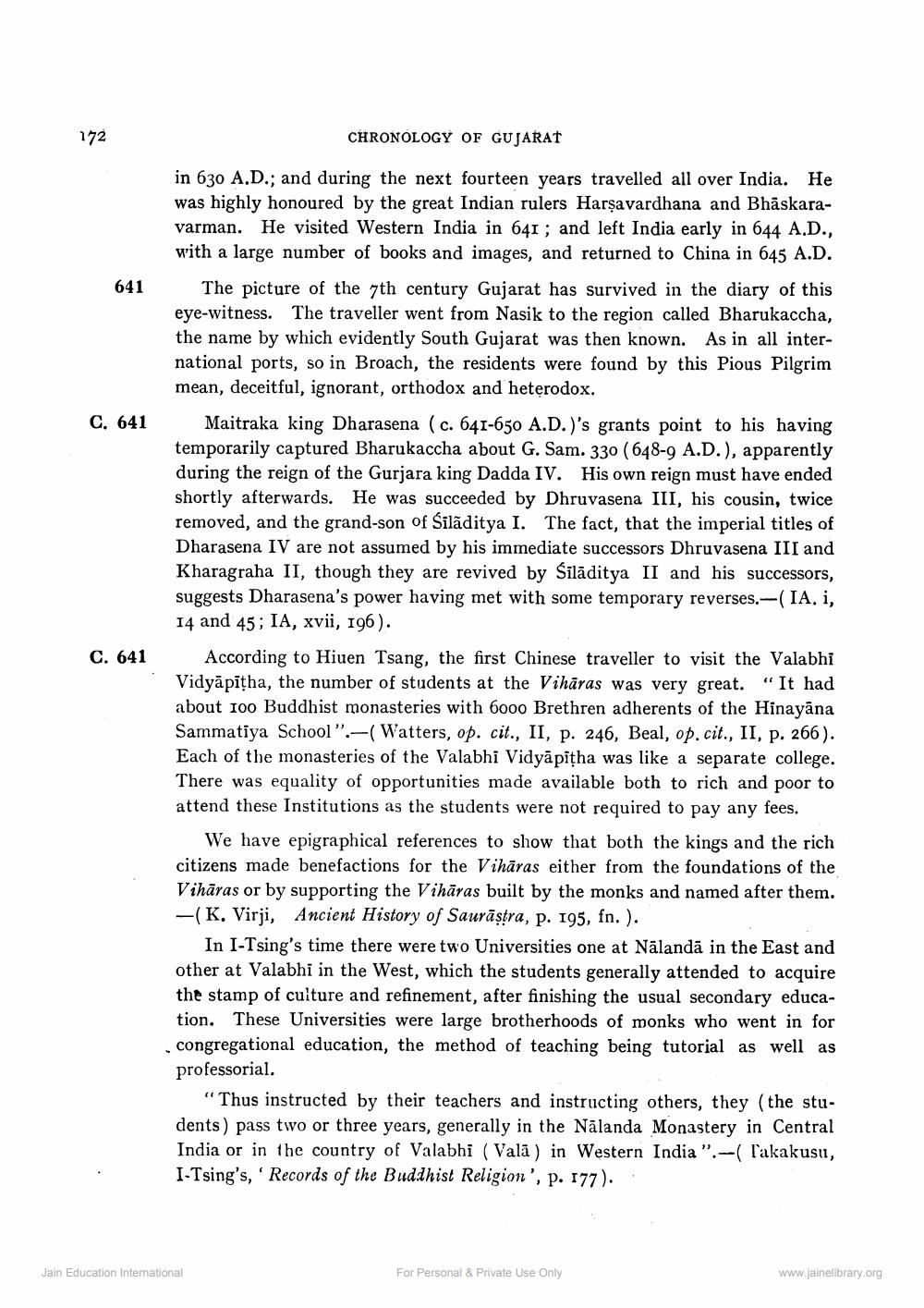________________
172
641
C. 641
C. 641
CHRONOLOGY OF GUJARAT
in 630 A.D.; and during the next fourteen years travelled all over India. He was highly honoured by the great Indian rulers Harṣavardhana and Bhaskaravarman. He visited Western India in 641; and left India early in 644 A.D., with a large number of books and images, and returned to China in 645 A.D.
The picture of the 7th century Gujarat has survived in the diary of this eye-witness. The traveller went from Nasik to the region called Bharukaccha, the name by which evidently South Gujarat was then known. As in all international ports, so in Broach, the residents were found by this Pious Pilgrim mean, deceitful, ignorant, orthodox and heterodox.
Maitraka king Dharasena (c. 641-650 A.D.)'s grants point to his having temporarily captured Bharukaccha about G. Sam. 330 (648-9 A.D.), apparently during the reign of the Gurjara king Dadda IV. His own reign must have ended shortly afterwards. He was succeeded by Dhruvasena III, his cousin, twice removed, and the grand-son of Ślläditya I. The fact, that the imperial titles of Dharasena IV are not assumed by his immediate successors Dhruvasena III and Kharagraha II, though they are revived by Siläditya II and his successors, suggests Dharasena's power having met with some temporary reverses.-(IA. i, 14 and 45; IA, xvii, 196).
According to Hiuen Tsang, the first Chinese traveller to visit the Valabhi Vidyapitha, the number of students at the Viharas was very great. "It had about 100 Buddhist monasteries with 6000 Brethren adherents of the Hinayana Sammatiya School".-( Watters, op. cit., II, p. 246, Beal, op. cit., II, p. 266). Each of the monasteries of the Valabhi Vidyapitha was like a separate college. There was equality of opportunities made available both to rich and poor to attend these Institutions as the students were not required to pay any fees.
We have epigraphical references to show that both the kings and the rich citizens made benefactions for the Vihāras either from the foundations of the Viharas or by supporting the Vikäras built by the monks and named after them. (K. Virji, Ancient History of Saurastra, p. 195, fn. ).
In I-Tsing's time there were two Universities one at Nālandā in the East and other at Valabhl in the West, which the students generally attended to acquire the stamp of culture and refinement, after finishing the usual secondary education. These Universities were large brotherhoods of monks who went in for congregational education, the method of teaching being tutorial as well as professorial.
"Thus instructed by their teachers and instructing others, they (the stu dents) pass two or three years, generally in the Nalanda Monastery in Central India or in the country of Valabhi (Vala) in Western India ".-(lakakusu, I-Tsing's, Records of the Buddhist Religion', p. 177).
Jain Education International
For Personal & Private Use Only
www.jainelibrary.org




